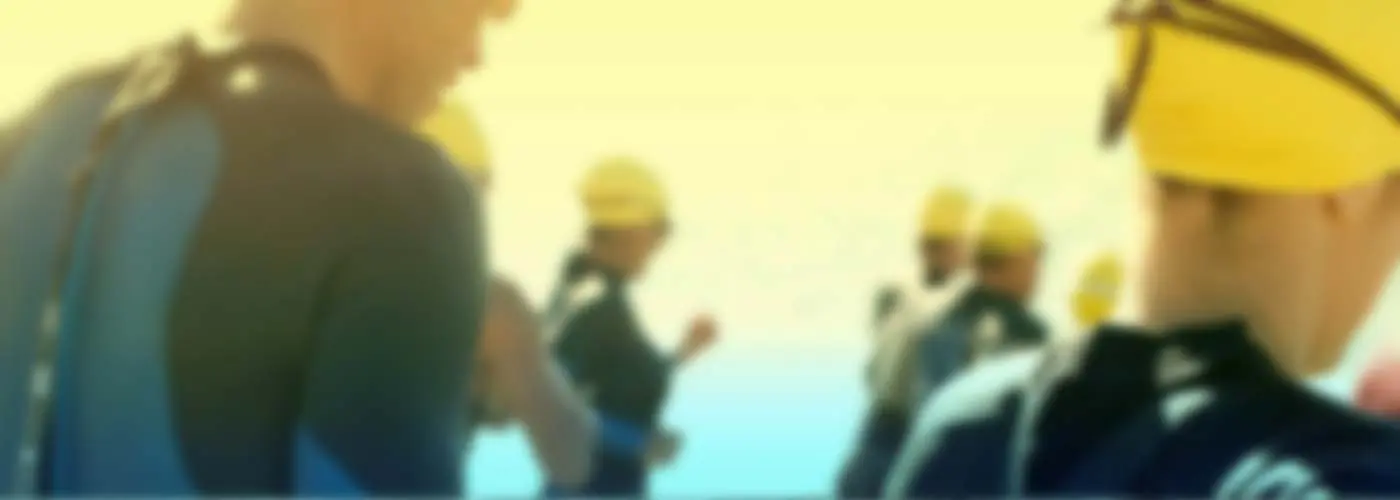There are ways to improve your speed on the bike leg of your next triathlon that have nothing to do with riding harder or logging more miles. These five tried-and-true tips are simple, easy to incorporate on race day and, best of all, most of them won't cost you a cent.
Keep Your Head Up
1 of 6
Aero helmets are the most cost-effective piece of equipment you can buy to save time while producing the same amount of watts. The problem is, you have to be in an aerodynamic position, with your head up and looking forward, to get those benefits.
As a race progresses, you'll find most triathletes begin to tire from holding an aerodynamic position on the bike for long amounts of time—and the neck muscles are some of the most common to get tired. Lowering your chin to chest and staring down at your handlebars to rest will point that expensive aero helmet with the tapered tail straight up in the air, causing more drag (and decreasing your speed more) than a regular helmet.
Tip: Build strength in your neck muscles by spending most of your time riding in an aerodynamic position during training. If you're still having a problem, try neck-strengthening exercises to build your endurance.
Find:
Your Next RaceGet Low and Stay There
2 of 6
Being in a good aerodynamic position is all about making yourself small to decrease resistance. Slapping on a pair of clip-on aerobars might seem like a good idea, but if your body isn't positioned properly on the bike, they might not do a whole lot of good.
Flattening out the back, keeping your chin low (toward the handlebar) and your elbows as close together as possible exposes less of your body to the wind. Keep in mind that dialing in a position that's aerodynamic is only beneficial if it's comfortable enough to maintain for the duration of the race. A super aero position that causes back, neck and shoulder fatigue won't do you any good if you have to sit up.
Tip: If you're having trouble dialing in your position, get a bike fit. He or she should be able to find the correct balance between staying aero and being comfortable on race day.
Find:
Your Next RaceUse the 20-Second Passing Window
3 of 6
USA Triathlon refers to the draft zone of a triathlon as a "rectangular area seven meters long and two meters wide surrounding each bicycle." Once you enter this zone, you have approximately 20 seconds to leave it. It's smart to take advantage of each pass you attempt on the bike. Ten seconds of drafting here and there will add up to big gains by the time you reach the finish line.
It might also be a good idea to stay just outside the draft zone. If you find a competitor on the course who's riding a similar pace, maintain the required seven-meter distance behind them. He or she won't block as much wind as they would if you were sitting on their wheel, but they will block some of the wind—and every little bit counts. It might also help with your pacing, which can fatigue you mentally if you have to ride the course with none of your competitors around.
Find:
Your Next RaceCarry Only the Essentials
4 of 6
Your tri bike doesn't need to be set up like a party boat. Too often triathletes carry more gear on the bike than necessary, and the extra weight only slows you down.
It's good practice to figure out exactly what the essentials are by mimicking race day during training. If you only need four gels, don't carry six. Instead of carrying four bottles of water, find out where the aid stations will be and see if you can make it there with two. For your flat kit, one tire lever, two tubes and a couple of CO2 cartridges should be all you need. Pack anything else and you're bringing along a suitcase.
Find:
Your Next RaceChoose Your Line Smartly
5 of 6
The condition of the asphalt on a racecourse can be spotty. But if you're paying attention, you can usually pick out sections of road that are smoother than others.
Avoiding potholes, cracks and rougher patches of road will help you to maintain your speed. Every bump in the road will slow you down, so choose the line you take wisely.







Discuss This Article